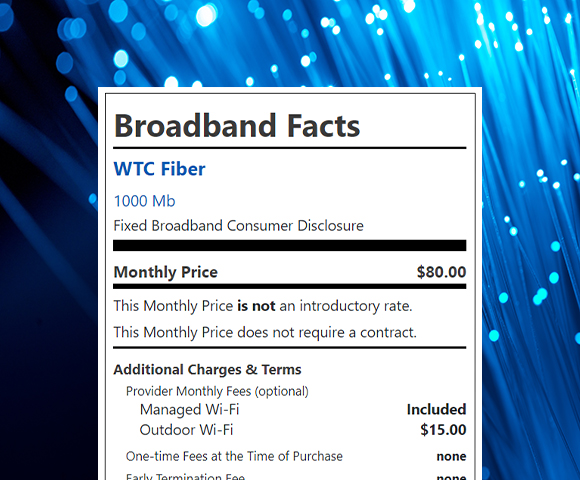You may have noticed a new official-looking label on websites for broadband internet services. As high-speed broadband becomes increasingly vital to our economy and daily lives, the government now mandates a consumer-friendly Broadband Facts label. This label must appear on internet packages to help consumers make informed decisions.
What exactly is the new broadband facts "nutrition" label?
Quite simply, the new broadband facts nutrition label is an-easy-to-read summary of basic information about the internet service being advertised. Recently required by the Federal Communications Commission (FCC), this label provides a standardized way for broadband internet providers to display key details about their services.

What information will be displayed on the new labels?
The Broadband Facts label highlights the most important factors customers need to make informed decisions when choosing a broadband provider. It allows for quick comparisons between services and ensures transparency in pricing and performance. Some of the specific examples on the Broadband Facts label are:
- Provider Name: The name of the broadband service provider.
- Monthly Price: The cost of the service per month.
- Introductory Rates: If the price is promotional, the label will specify the duration of the introductory rate and the new rate after the promotion ends.
- Contract Terms: Whether the price requires a contract, along with details on the length and terms of the contract.
- Additional Monthly Fees: A breakdown of any recurring fees, such as equipment rentals.
- One-Time Fees: Any setup costs, including installation or administrative fees.
- Performance Metrics: Typical download and upload speeds, as well as latency.
- Data Limits: Information on data caps, if applicable, and any costs for exceeding the data limit.
Key Broadband Terms Explained
While many terms on the label are straightforward, some technical terms may need further explanation:
- Typical Download Speed: This refers to the expected speed at which data is downloaded from the internet to your home or office. It impacts activities like browsing, streaming, and downloading files.
- Typical Upload Speed: This is the speed at which data is sent from your home or office to others via the internet, affecting tasks like live streaming, video conferencing, or uploading large files.
- Typical Latency: Latency measures the time it takes for data to travel between two points, which is crucial for activities like online gaming or video calls.
If you have any questions about the Broadband Facts label, our services, or if you're looking to upgrade your internet, visit wtcks.com or give us a call at 785-456-1000. We're here to help!



Join the discussion! Login to your myWTC account to post a comment